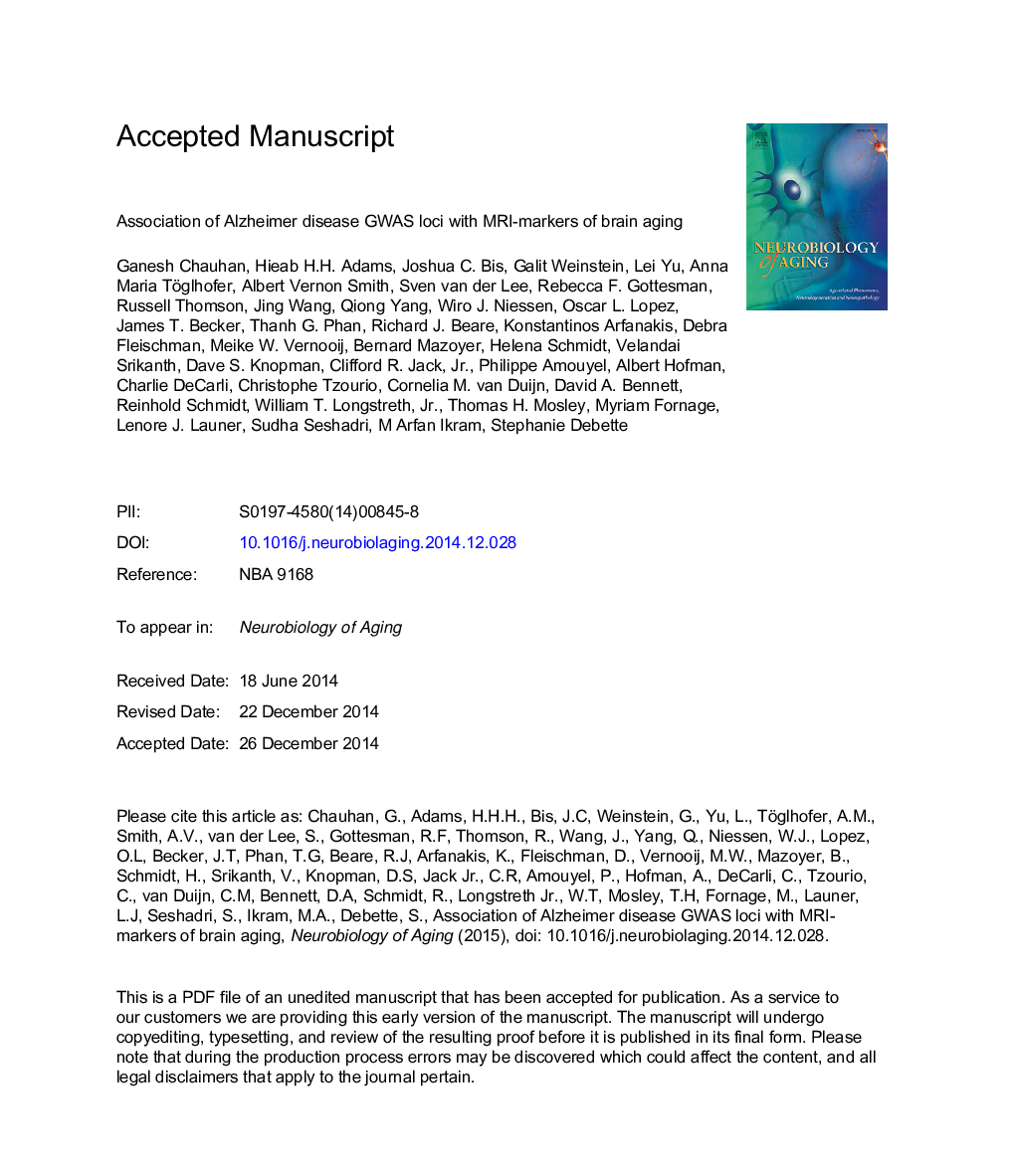| Article ID | Journal | Published Year | Pages | File Type |
|---|---|---|---|---|
| 6804424 | Neurobiology of Aging | 2015 | 69 Pages |
Abstract
Whether novel risk variants of Alzheimer's disease (AD) identified through genome-wide association studies also influence magnetic resonance imaging-based intermediate phenotypes of AD in the general population is unclear. We studied association of 24 AD risk loci with intracranial volume, total brain volume, hippocampal volume (HV), white matter hyperintensity burden, and brain infarcts in a meta-analysis of genetic association studies from large population-based samples (N = 8175-11,550). In single-SNP based tests, AD risk allele of APOE (rs2075650) was associated with smaller HV (p = 0.0054) and CD33 (rs3865444) with smaller intracranial volume (p = 0.0058). In gene-based tests, there was associations of HLA-DRB1 with total brain volume (p = 0.0006) and BIN1 with HV (p = 0.00089). A weighted AD genetic risk score was associated with smaller HV (beta ± SE = â0.047 ± 0.013, p = 0.00041), even after excluding the APOE locus (p = 0.029). However, only association of AD genetic risk score with HV, including APOE, was significant after multiple testing correction (including number of independent phenotypes tested). These results suggest that novel AD genetic risk variants may contribute to structural brain aging in nondemented older community persons.
Related Topics
Life Sciences
Biochemistry, Genetics and Molecular Biology
Ageing
Authors
Ganesh Chauhan, Hieab H.H. Adams, Joshua C. Bis, Galit Weinstein, Lei Yu, Anna Maria Töglhofer, Albert Vernon Smith, Sven J. van der Lee, Rebecca F. Gottesman, Russell Thomson, Jing Wang, Qiong Yang, Wiro J. Niessen, Oscar L. Lopez, James T. Becker,
